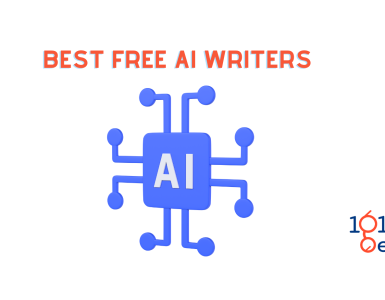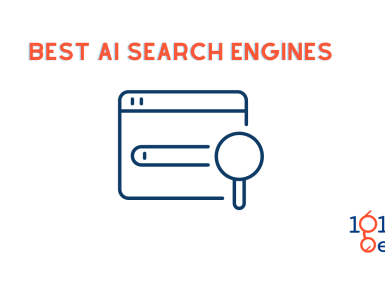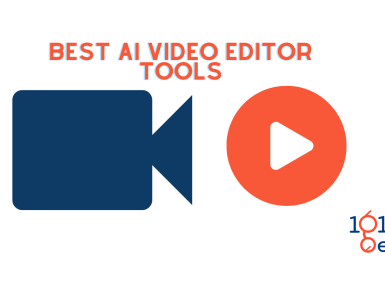If you’ve been looking into the Helpful Content Update or the October Spam Update, then you may have noticed that some sites are being affected due to using AI content. But to really find out what’s going on, it helps to use AI content detectors, which can pinpoint exactly what kind of content is on a website.
These AI tools are extremely useful for getting a breakdown of what’s going on with a broad overview of the content on a website. They’ll give insights like keyword variety, readability scores, and much more – so you can get an in-depth look at your content’s effectiveness and make appropriate changes if needed.
And if you’re worried about putting up low-quality content due to using artificial intelligence (AI) content creation tools, then knowing how these AI detection tools work is critical in helping keep your site under the radar. Here’s a quick introduction to some of the most popular AI content detections tools out there right now!
Btw. you can pretty easily trick these AI detector tools with these methods and tricks.
| AI Detector | Description |
|---|---|
| GPTZero | Developed by Edward Tian, a senior at Princeton University, GPTZero evaluates whether text has been generated by ChatGPT using signs like “perplexity” and “burstiness” to assess whether an excerpt was written by a bot or a human. |
| Originality.AI | An AI content detection tool that can detect everything from GPT-3, GPT 3.5 and ChatGPT. |
| Hugging Face | Their AI Content Detection Tool is a useful tool for checking the quality of your AI content and text data. It quickly detects lower-quality AI content and higher-quality human content. It also provides reliable and precise results. |
| GLTR | Developed by Hendrik Strobelt Sebastian Gerhmann Alexander Rush MIT-IBM Watson AI Lab Harvard NLP, it operates by giving users the ability to paste text into the tool and view a visual representation of the analysis, alongside several histograms providing statistics about the input. It highlights words based on their likelihood of being predicted if they were preceded by another word, which can indicate that the text was written by AI. |
What You'll Learn
GPTZero
Edward Tian, a senior at Princeton University has developed an application called GPTZero that aims to evaluate whether text has been generated by ChatGPT, a popular chatbot that has raised concerns about its potential for unethical usage in academia.
GPTZero uses signs like “perplexity” and “burstiness” to assess whether an excerpt was written by a bot or a human. Perplexity is a metric for text complexity and “burstiness” compares the various sentence versions separately. GPTZero has been used by more than 30,000 users since it went online on January 2. However, the app collapsed due to its extreme popularity.
Originality.AI
Originality.AI is an AI content detection tool that can detect everything from GPT-3, GPT 3.5 and ChatGPT. It was the first tool to detect these types of AI models and it has been a fantastic solution since its launch.
I tested Originality.AI recently and I found it to be highly accurate in correctly detecting AI-generated work. The platform also checks for plagiarism when checking your work, so you never get any surprises (and know swiftly whether your text contains other texts).
Not only does Originality.AI support writers who want to check their own work for originality, but it also supports businesses who need all of their employees’ writing checked or have important documents to scrutinize for plagiarism.
Hugging Face
Hugging Face is an amazing machine learning and artificial intelligence (AI) community and platform. Their AI Content Detection Tool is a really useful tool for anyone who wants to check out the quality of their AI content and text data. Just paste your text into the tool and it will quickly detect lower-quality AI content, as well as higher-quality human content.
The results from Huggingface’s AI Content Detection Tool are reliable, precise, and always quick to provide you with valuable insight about the quality of your text or AI data. I have found this feature helpful when working on my projects involving natural language processing (NLP) and machine learning models.
If you’re looking for a great way to analyze the quality of your text or AI data, then use Huggingface’s AI Content Detection Tool! You won’t regret it!
GLTR
The GLTR tool is a must-have for anyone who needs to detect AI content. Developed by Hendrik Strobelt Sebastian Gerhmann Alexander Rush MIT-IBM Watson AI Lab Harvard NLP, it operates by giving users the ability to paste text into the tool and view a visual representation of the analysis, alongside several histograms providing statistics about the input. The visual representation highlights words based on their likelihood of being predicted if they were preceded by another word – if many words are highlighted in green or yellow, for example, this could indicate that the text was written by AI. Similarly, lengthy sequences of red and purple hightlight indicate that the text was written by a human.
I’ve tried out GLTR myself and was impressed by how well it shows whether or not text was made with GPT-2. You can follow the detailed introduction on its site to learn more about how it works. All in all, GLTR is a handy tool that can really help you get an insight into whether your content has been created using AI technology.
Kazan SEO
Kazan SEO is the perfect tool for any SEO enthusiast looking for a comprehensive AI detection solution. It’s great because it provides more than just AI detection – it features other powerful features such as a content generator, keyword research and discovery tools, URL extractor for deep SEO analysis and even co-relational content optimization. And that’s not all – Kazan SEO provides its users with an impressive array of SEO tools to help them improve their rankings on search engines. If you’re looking for an all-in-one toolkit specifically designed for the serious SEO professional, then look no further than Kazan SEO.
Writer
Writer is an industry leader when it comes to written content creation. It delivers a comprehensive AI Content Detector that allows users to evaluate their text-based content before releasing it publicly.
The AI Content Detector displays the detected score, so you can measure the content quality easily. Plus, a fantastic customer support team is there to assist and ensure you’re getting the most out of Writer’s features.
Whether you want to create blog posts, articles or reports, Writer has the right tools for all your requirements – complete with an easy-to-use AI detector that gives you reliable results.
Understanding the Mechanism of AI Detection Tools
Understanding the Mechanism of AI Detection Tools has never been easier. These tools leverage language models like those used by Google to make judgments about the likelihood of particular words and phrases in content. This allows for a score to be calculated for how “human-like” the content reads when viewed through Google’s eyes.
Using these AI Detection Tools, website owners and content publishers can use AI writers to create more content, drastically increasing their online presence without any fear of penalties from Google. With the help of this technology, users are now able to understand what might be missing from their content before it is published into the public domain.
Are AI Detection Tools Worth It?
If you’re looking to rank high in search on Google, AI Detection Tools are worth it. With so many options available for free, AI Detection Tools can help guarantee that your AI content passes underneath Google’s radar without having to worry about being caught and penalized.
Using an AI Detection Tool can save you the hassle of manually searching for issues with your content, as it will analyze each word, phrase, title and media of your content to ensure that all aspects are accurate and true. Not only this, but these tools can scan sensitive information such as identifying personal data or containing information that would require legal permission – ultimately protecting you from potential unwanted legal risks.
Overall, using an AI Detection Tool is a great way to double-check issue exceptions in content before submission. By investing in one of these tools you have the peace of mind knowing that your work is good and ready to be seen by a larger audience.
Google and AI-Generated Content
Google has always taken a strong stance against AI-generated content and its use in any online material. With all the new technologies available, people are wondering whether Google is still maintaining that same stance.
John Mueller, Google’s Search Advocate, recently reconfirmed that creating content using artificial intelligence and AI writing tools is considered as spam by Google’s standards and not allowed on their website or platform.
Although the exact methodologies Googles uses to differentiate AI-generated content from normal written pieces remain undisclosed, it is better to be extra careful when creating web material and use an AI content detector before submitting anything online.
FAQs
- Can Google detect AI writing?
Yes, Google has advanced algorithms that can detect AI-generated content. However, it is not foolproof and may not be able to distinguish between human and AI writing in all cases.
- Will AI take over content writing?
It is possible that AI will play a larger role in content writing in the future, but it is unlikely that it will completely replace human writers. AI can assist with certain tasks, such as generating outlines or suggesting alternative phrases, but it may not be able to fully replicate the creativity and nuance of human writing.
- Is AI the future of content writing?
It is difficult to predict the exact role that AI will play in the future of content writing. It is possible that it will become more prevalent and play a larger role in the industry, but it is also possible that it will remain a tool rather than a replacement for human writers.







